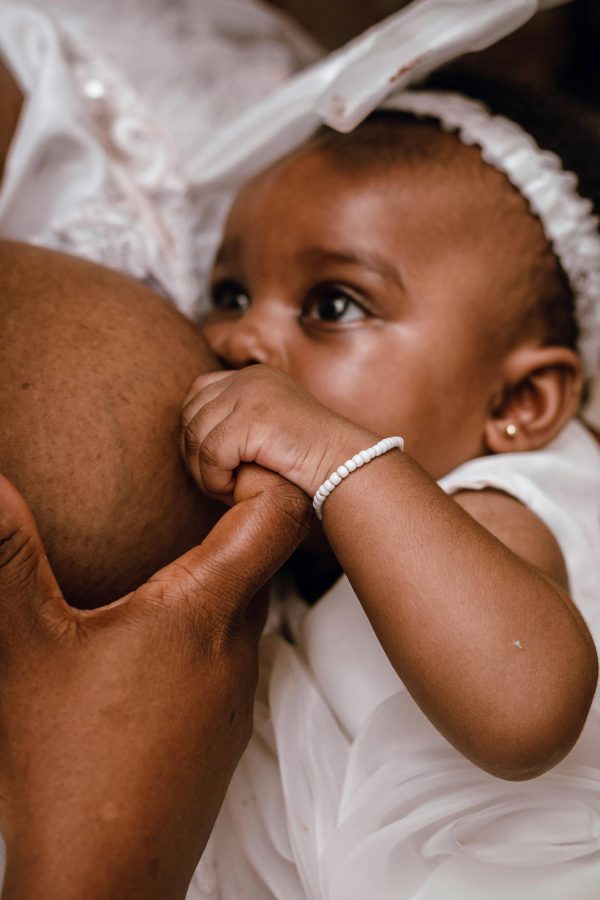To mark International Breastfeeding week, Debra Hennessy, IBCLC, Family Nursing and Home Care (FNHC), and Deborah McCoy, Infant Feeding Specialist Midwife, Health for Community Services (HCS), have collaborated on a series of blog posts to celebrate the week.

Breastfeeding will provide your baby with the best possible start in life. Breastmilk gives them the best nutrition, supports their development, and reduces their risk of illness and infection.
Once your baby is born, skin to skin contact is the best place to start. This is equally important even if you decide to bottle feed your baby. Skin to skin contact helps to calm you and your baby, it regulates your baby’s heart rate, breathing, and body temperature.
It also is the best way to initiate a breastfeed.
Skin to skin contact can be initiated at any time not just when the baby is feeding, it is amazing for bonding with your baby and releases lots of oxytocin. Skin to skin contact can also be done if you have to go theatre to have your baby and then can carry on when you are in recovery. Your partner can also have skin to skin with the baby if you are not feeling well enough.
Your baby might not want to feed initially and just may need a little time to adjust to being born before having their first breastfeed. Your midwife will ensure your baby is well and will encourage you to keep the baby close to you and may suggest some hand expressing so you can tempt your baby to feed with some colostrum.
In the first 24 hours after your baby is born, they may only have 3-4 breastfeeds. This is perfectly normal and expected with babies born at full term. Babies who need extra support after being born may need to have their feeding monitored more closely until feeding becomes established.
It is important that breastfeeding is comfortable for mothers, so please ask your midwife or health visitor to support you with breastfeeding as it is establishing.
Following simple principles to position and attach your baby at the breast will make breastfeeding a little easier for you . Your midwife or health visitor will advise you of the CHIN principles for positioning your baby at the breast, this means:
Close, hold your baby close into your body.
Head free, support the top of the baby’s shoulders and nape of their neck, your thumb and forefinger will rest just under their ears. You do not need to touch your baby’s head at all.
In line, ensuring your baby’s body and head are all going the same way.
Nose to nipple. This will ensure your baby’s chin comes in close to the breast encouraging the baby to open its mouth wide as you bring the baby to the breast.
Keeping your baby close to you and watching for signs that you baby is ready to feed will ensure you and your baby are calm when attempting to position and attach the baby to your breast.
Signs that your baby is feeding well:
- the baby takes a large mouthful of breast.
- it doesn’t hurt when your baby is feeding (initial sucking may feel strong at first)
- your baby rhythmically sucks and swallows at the breast.
- your baby comes away from the breast on their own and appears content and satisfied
- your breasts and nipples are comfortable.
How do I know if my baby is getting enough milk?
It is not unusual for you to wonder if your baby is getting enough milk from your breast.
It is very rare that breastfeeding mothers do not produce enough milk for their babies.
Feed your baby as often as they want, responsive feeding is not just about food it is also for comfort, love and reassurance for both mother and baby. You cannot over feed your breastfed baby. Your baby’s nappy will also give you a good indication of successful feeding.
After birth you baby will pass black sticky poo called Meconium, as your baby establishes feeding from your breast the poo will change colour and by Day 3 of your baby’s life it should be greenish brown in colour and your baby will have around 3 wet nappies a day.
By Day 5 your baby’s poo should be yellow in colour and may have a grainy appearance it will also be quite loose, this is perfectly normal for a baby who is breastfeeding. Your baby will be producing more wet nappies too and by day 5 there should be around 5-6 and they will be much heavier.
Please talk to your midwife or health visitor if you are worried about your baby’s feeding.
If you are pregnant and would like to know more about breastfeeding, contact your community midwife.
Baby Steps is a perinatal education programme run by Family Nursing and Home Care that will help you prepare you to get breastfeeding off to a great start.
There are also breastfeeding support groups and clinics to help you once your baby arrives if you need any additional help or support.
Contact the Duty Health Visitor on 01534 449135 to find out more about Breastfeeding Buddies or the Community Midwives Breastfeeding Clinic on 01534 449139 / 449190

 blog.gov.je
blog.gov.je